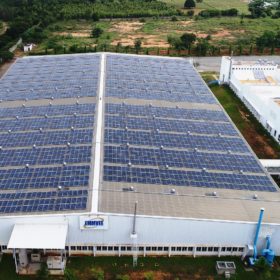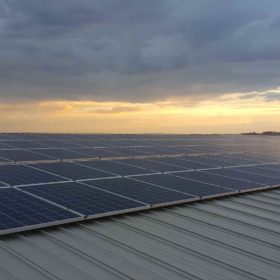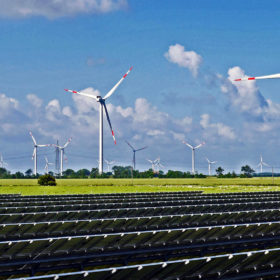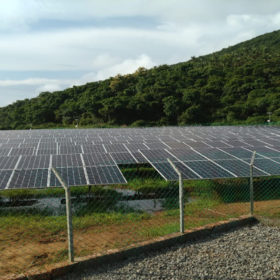Karnataka opens tender for rooftop solar in Belagavi
Developers have until August 29 to submit bids for the installation of grid-connected rooftop solar plants on selected government buildings of Belagavi Smart City.
SunSource Energy commissions a 6 MW rooftop solar plant in Rajasthan
The project—based on Resco model—is developed for the Bhilwara industrial site of a textile company. It is spread across five rooftops covering 21,00,000 square feet and uses 20,000 solar modules of different types.
Strategies to prevent overvoltage-induced inverter disconnections
Australian scientists have identified seven methods to prevent PV losses when overvoltage-induced inverter disconnections occur. The methods include battery storage, reactive power inverters, export limits, distribution static synchronous compensators, the replacement of old conductors in power grids, load reconfiguration, and dynamic voltage restoration.
Europe will be our next stop – S&W solar interview
Having bagged large orders in the U.S. and Australia, Indian multinational engineering, procurement and construction (EPC) services provider Sterling and Wilson Solar is bidding for tenders in regions which have eased up business lines, Europe among them. Kannan Krishnan, S&W’s chief operations officer for solar in India and the South Asian Association for Regional Cooperation area, speaks to pv magazine about the impact of Covid-19 on the solar EPC business and the company’s expansion plans.
India will reach 125 GW renewable capacity by December 2022
A new report by ICRA says large-scale solar in the country will likely achieve the 60 GW target set by the Indian government. Rooftop solar and wind, however, will see a shortfall.
Largest solar power plant of Navy commissioned in Kerala
The 3 MW solar plant at Indian Naval Academy, Ezhimala, was executed by Kerala State Electronics Development Corporation Ltd (KELTRON).
Commercial and industrial rooftop solar set to surge
Rooftop solar is the obvious choice to save on electricity costs for businesses as they look to preserve capital and find ways to cut expenses post Covid-19.
Fourth Partner Energy raises US$15 million from Swiss investor responsAbility
The Hyderabad-headquartered developer will utilize the debt funding towards construction of upcoming projects for its clients as it aims to add around 350 MW capacity across both open-access and distributed solar portfolios this fiscal year.
India installed 7.6 GW of solar in the last fiscal year, and plans another 8 GW by April
Some 5.9 GW of utility scale PV generation capacity was added in 2019-20, plus 1.7 GW of rooftop solar, with domestic module manufacturers enjoying around 40% of the market.
Gujarat extends solar power policy till December 31
The state’s Solar Power Policy 2015 was due to expire since April 1, 2020. With a 9-month extension, solar power plants installed and commissioned till December end become eligible for the benefits and incentives declared under this policy.















